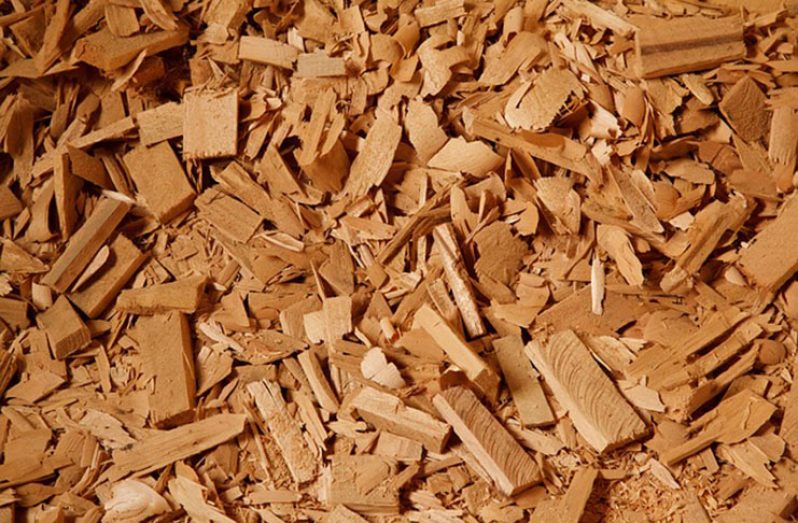Guyana’s wood waste can produce 109,393.87 barrels of diesel
IN a growing world, where the conventional forms of energy are moving fast toward extinction as well as contributing to global concerns like the greenhouse effect and global warming, the need to innovate and employ alternative or unconventional energy sources has become crucial for the existence of a future.
As such, National Agricultural Research and Extension Institute (NAREI)’s Chief Executive Officer, Dr. Oudho Homenauth and Clairmont Clementson, both Research Scientists conducted a research aimed at compressing and disposing of waste, while attempting the generation of energy from them.
The study, which was aided by Research Assistants, Lalita Gopaul and Vickram Persaud, was done early this year and titled, “Investigation of Bioenergy utilisation in Guyana, including environmental and economic impacts.”
The bioenergy sources identified in Guyana are rice husk from rice production, residues from the forestry industry, biodiesel from palm oil, cogeneration of bagasse, bioethanol from the molasses and biogas from cattle manure, sewage sludge, and urban and suburban waste.
The conversion of rice husk to energy was featured in this column last week, now we will look at the transfer of forest residue to energy.
Wood waste includes sawmill rejects, edging, trimmings, veneer rejects, barks and sawdust from the logging industry. The study found that wood residue forms a significant input for energy used in gasification, combustion and other systems that harness energy from woody biomass.
While combustion releases carbon dioxide into the atmosphere, gasification is a cleaner method of conversion. It uses high temperatures in an oxygen-deprived environment to convert woody biomass into a gas (a mixture of hydrogen, carbon monoxide, and methane).
The gas produced by this method is called synthesis gas and it is considered an environmentally safe alternative. Guyana’s 81,974.4 tons of wood waste has the potential to produce 631,202,880,000 British thermal unit (BTU) of energy which is equivalent to 109,393.87 barrels of diesel.
The report noted that many sawmills regarded wood waste as a troublesome by-product of their operation resulting in it being incinerated or disposed of in the landfill. There is currently a 40 percent recovery rate of timber in Guyana coupled with a build-up of sawmill waste which leads to a solid waste issue.
Operators of wood processing facilities are encouraged by the Guyana Forestry Commission through their code of practice to recycle sawdust and wood shavings for animal bedding, waste as fuel for the generation of heat/power, production of fuel briquettes and manufacture of charcoal.
However, a significant amount of sawmill waste ends up in landfills and dumpsites across the country despite being advised that this practice is unacceptable.
One major challenge faced by operators in utilisation of their waste to produce energy is the high investment needed to implement a gasification system.
A large sawmill operator in Parika reported their attempt to source a gasification system. However, the cost of a twelve year payback period caused the project to be abandoned. Smaller sawmill operators noted that they are not willing to invest in such a system since it doesn’t make their small operation profitable.




.png)









